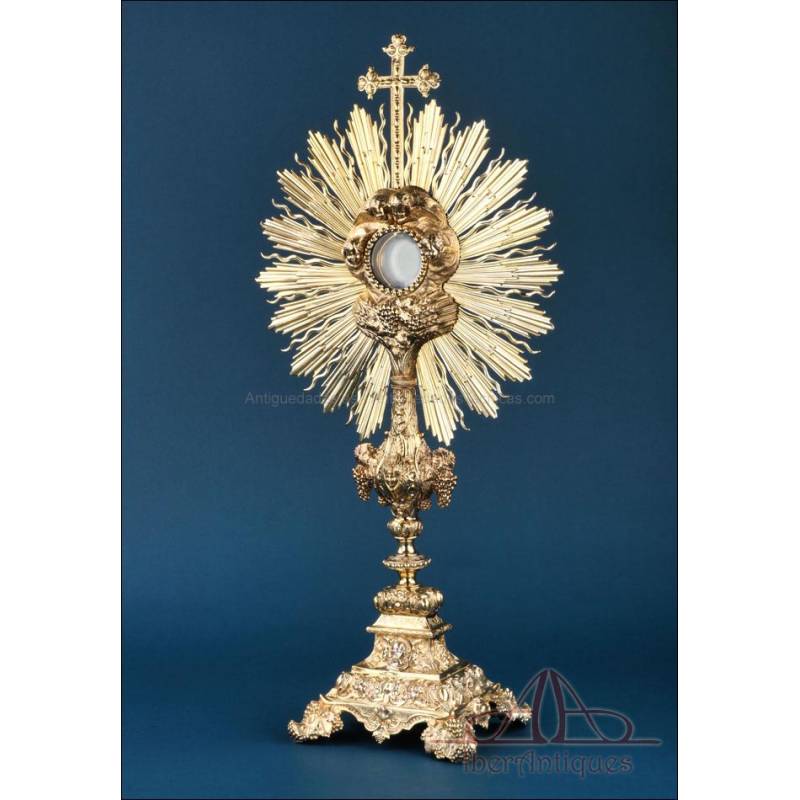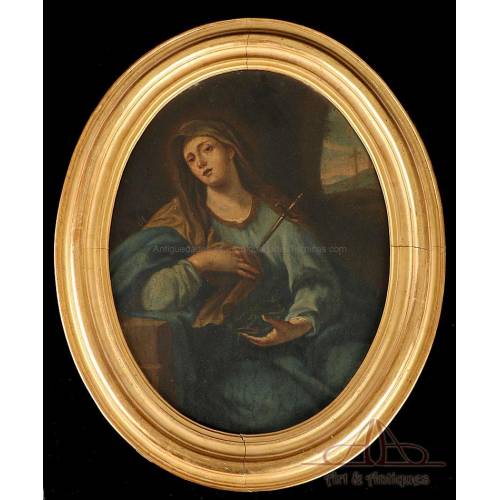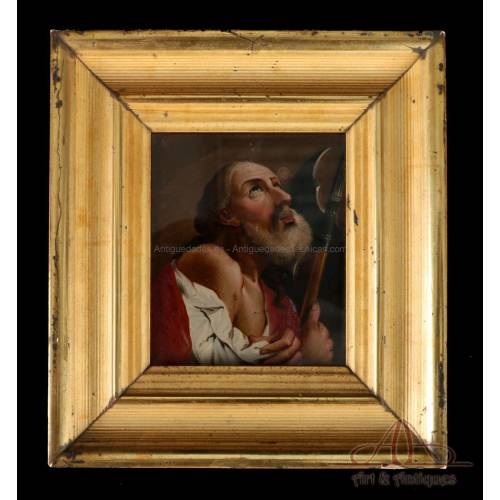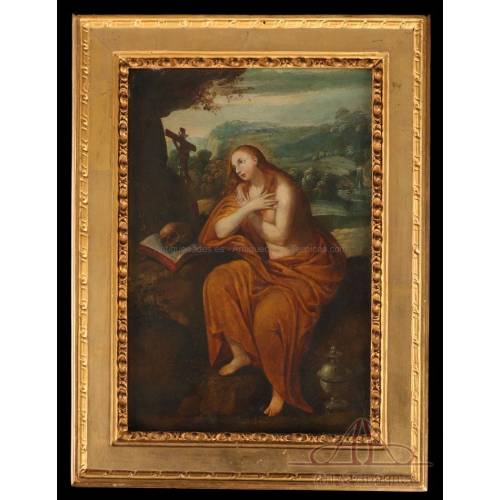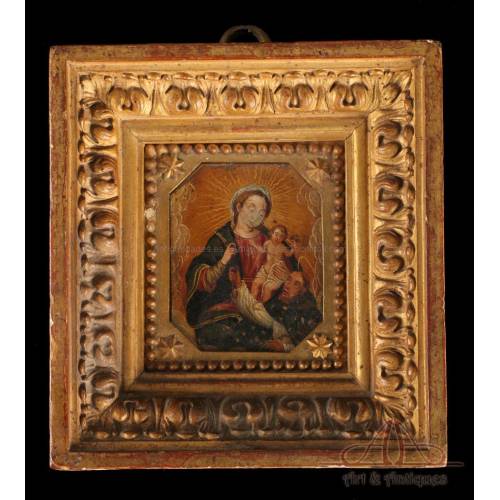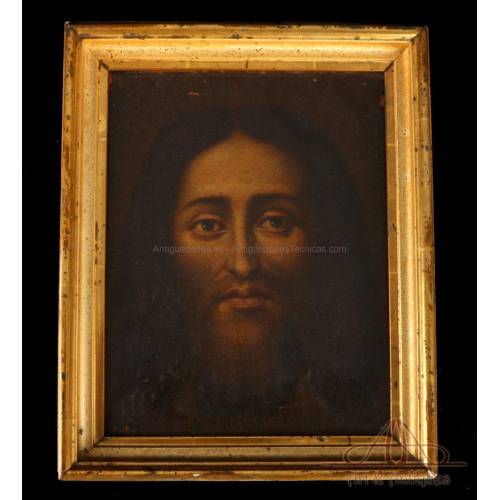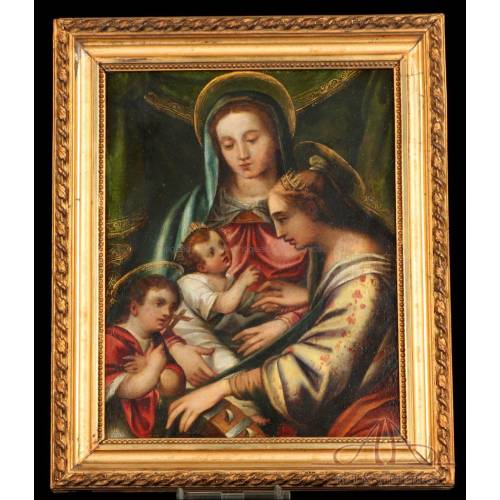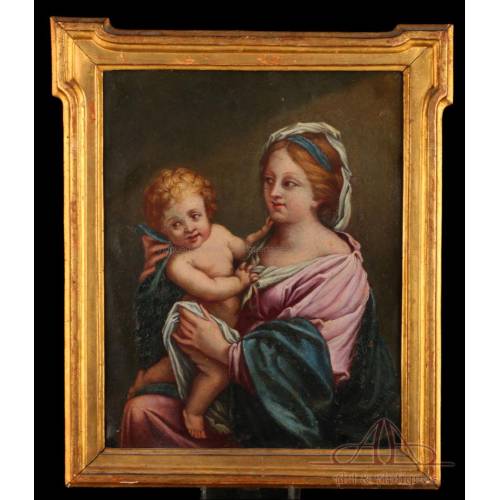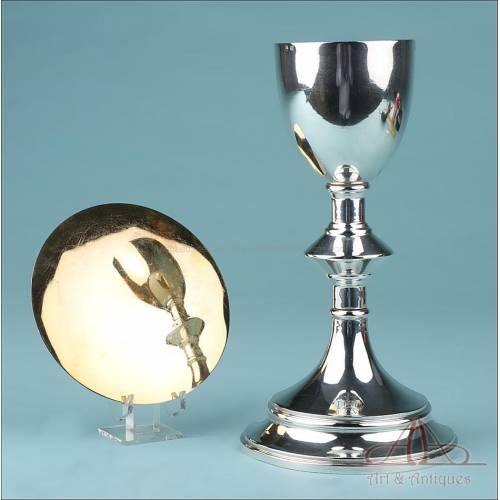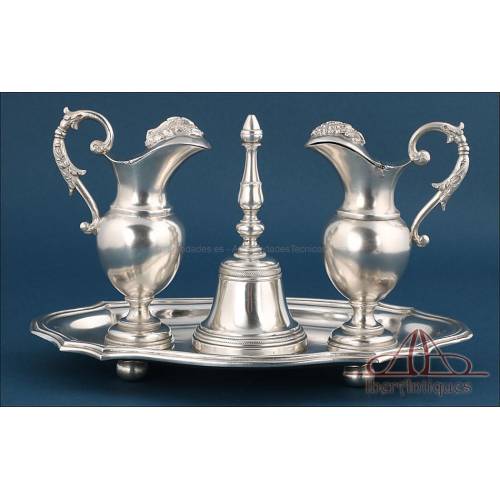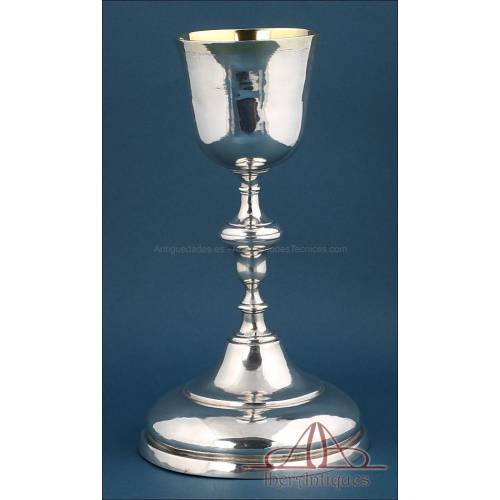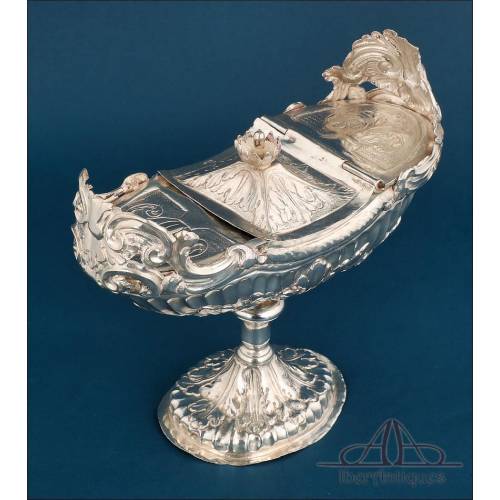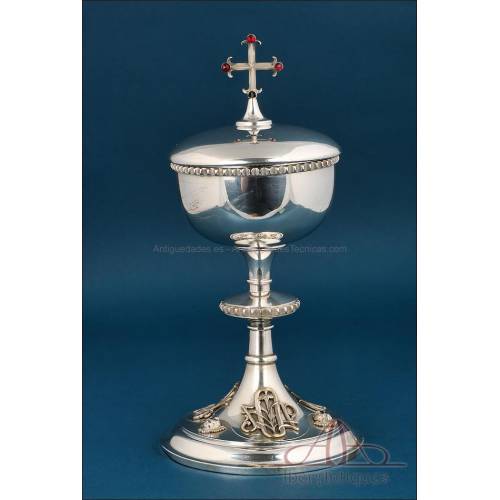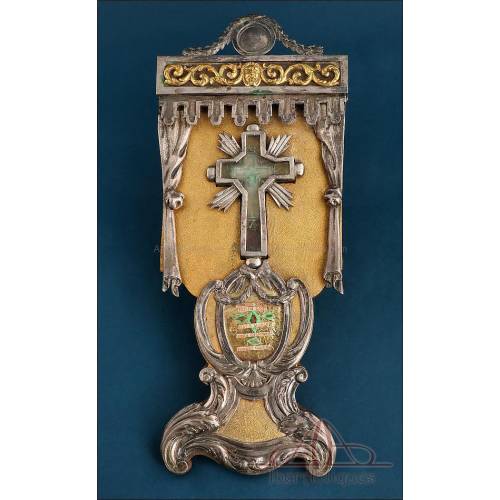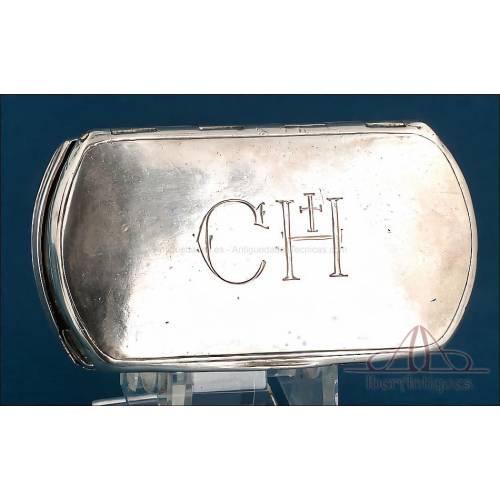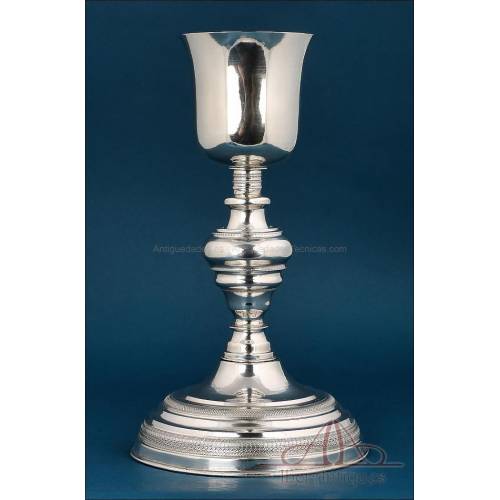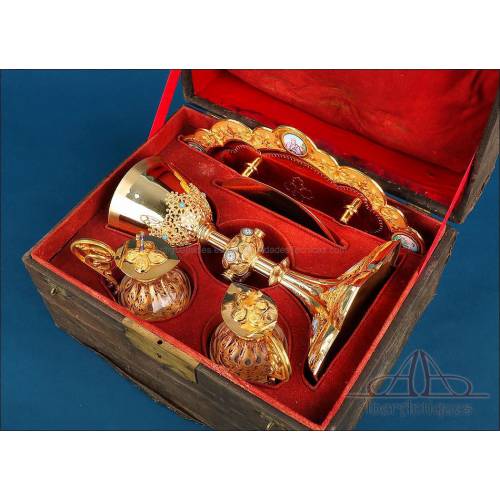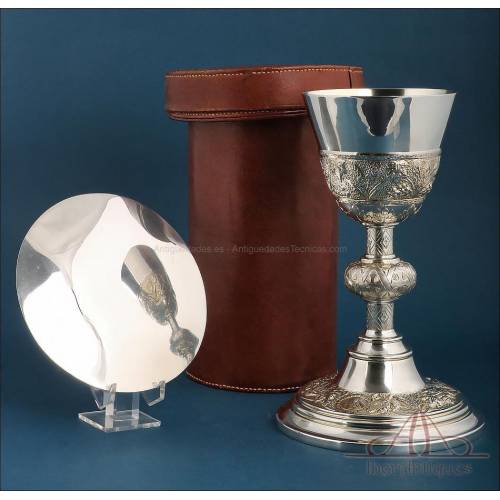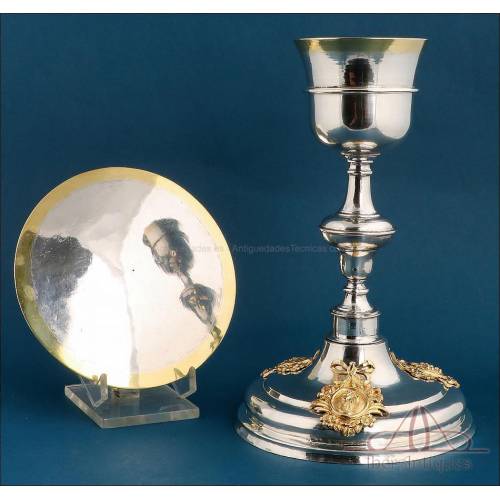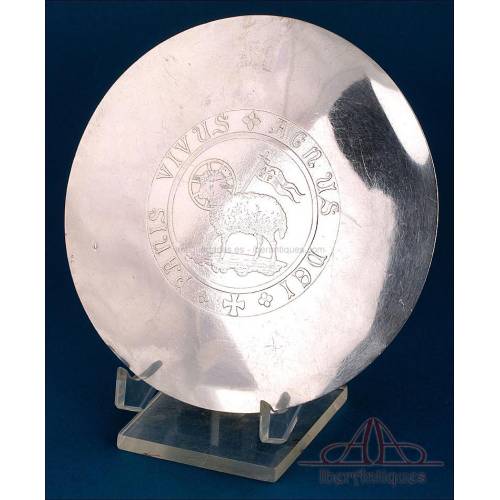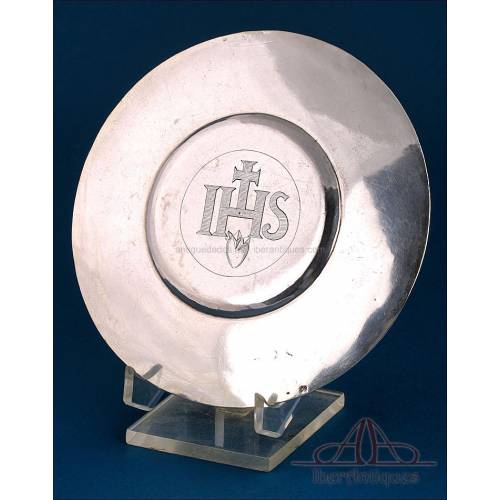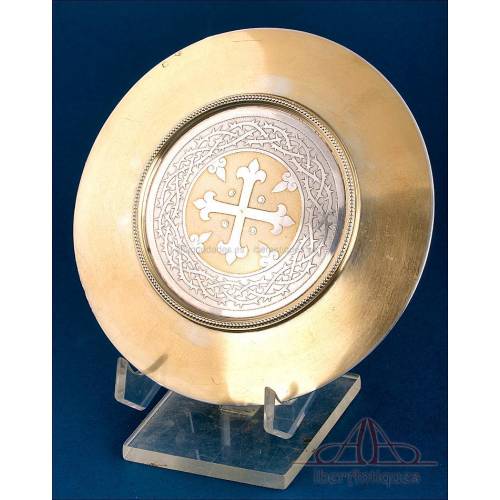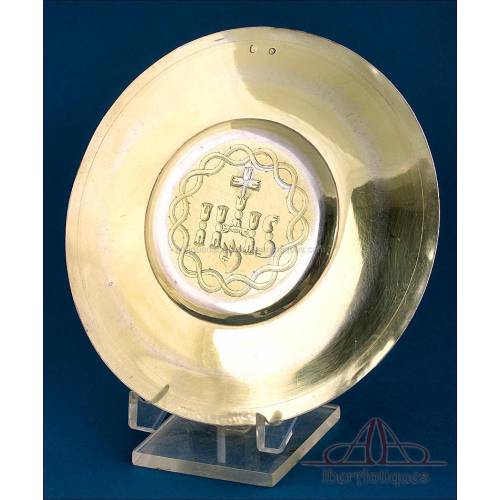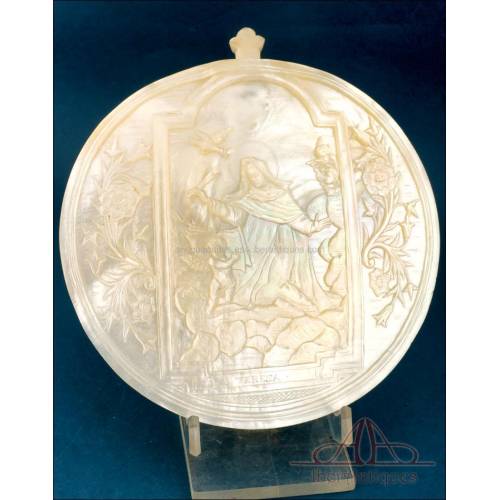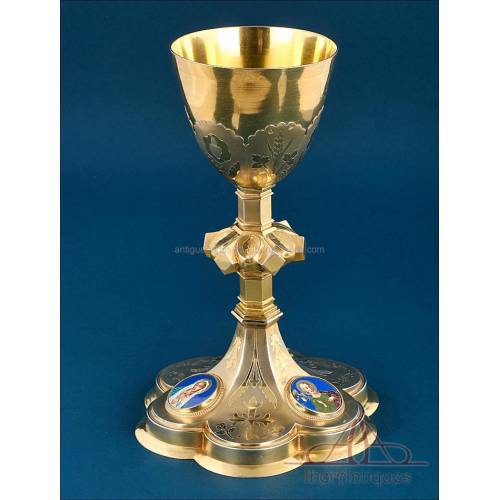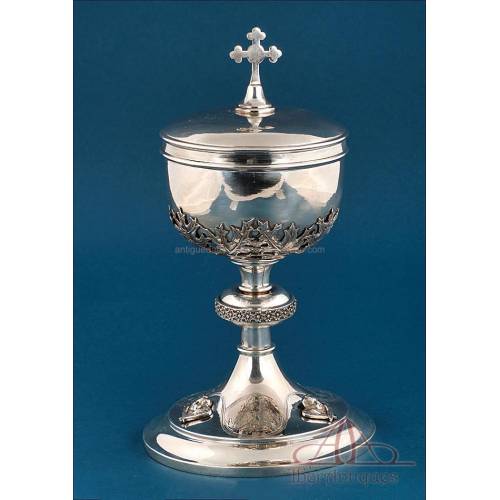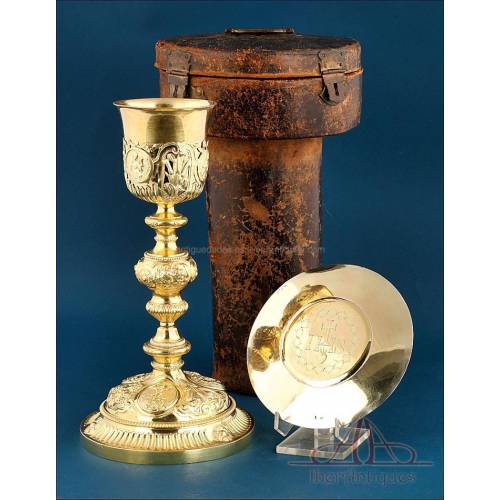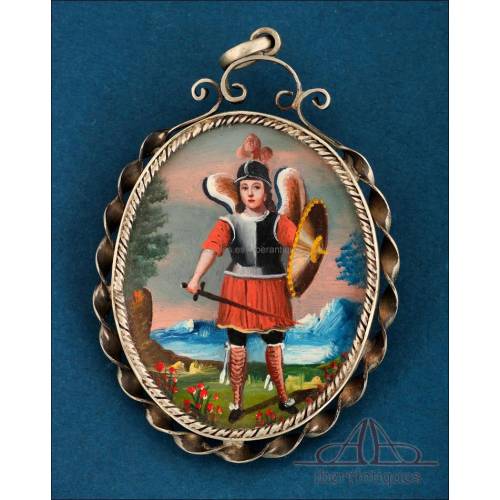E-291
Antique Gilt Silver Monstrance. Complete. 28 in. France, 19th Cent.
19th-century French gilt silver monstrance. 28 in. tall, Baroque style, richly decorated with cherubs, grapes, vines, and sacred faces.
Antique Gilt Silver Monstrance. Complete. 28 in. France, 19th Century
We present this magnificent and solemn antique gilt silver monstrance, made in France during the 19th century. A truly spectacular piece that stands out both for its large size and the exquisite richness of decoration in every one of its elements. With an imposing height of 71 centimeters and a substantial weight of 1560 grams, this masterpiece of sacred art is crafted entirely in finely gilded silver, which gives it a warm and majestic glow.
Its style is unmistakably Baroque, exuberant, theatrical, and deeply symbolic. The sunburst, or ostensorium, which measures 34 cm in diameter, radiates energy and spirituality. From its central circular window emerge strong straight and flame-like rays evoking divine light, while in the core we find an impressive arrangement of cherub masks appearing through clouds, tenderly embracing the viril or luna, which remains intact and functional. The luna is suitable for hosting hosts up to 5.5 cm in diameter, (2,17 inches) an important detail for actual liturgical use.
The central stem, connecting the sunburst to the base, is lavishly decorated with Eucharistic motifs: clusters of grapes and vine leaves, all meticulously molded and repoussé in silver. At the center of the floral node appears the delicate face of a winged cherub, symbolizing purity and adoration. This design reinforces the Eucharistic iconography with a clear catechetical intention, teaching and moving through form.
The base, shaped like a truncated pyramid with clawed feet resting upon bunches of grapes and vine leaves, completes the ensemble with impressive repoussé ornamentation. Each side features a medallion: one shows the serene and majestic face of Jesus Christ, while the opposite displays the sweet and contemplative face of the Virgin Mary. Surrounding them unfolds a lush ornamental repertoire, rendered with extraordinary detail. Tiny angelic faces, volutes, floral scrolls, and grape clusters seem to rise from the surface, giving the monstrance a fascinating three-dimensional presence.
The cross crowning the piece is richly chiseled, with floral designs at the tips. It stands as the perfect culmination of this monstrance, extending vertically the gesture of worship and elevation that the piece as a whole conveys.
During close examination, I have located two silver hallmarks: one on the cross and another among the sunrays. Both confirm the piece's silver composition. I'm convinced there’s at least a third hallmark on the base, but with so much intricate detail, it’s like trying to find Waldo, I haven't yet spotted it, though I'm sure it's there, cleverly camouflaged among the dense repoussé work.
The overall condition is very good, with no missing elements, all original parts intact, and the gilding in excellent shape. The slight signs of age do not detract from its beauty but rather add authenticity and character. A piece of great artistic and devotional value, ideal for being reinstated in church service, especially in Eucharistic Expositions.
This is not only an exceptional liturgical object but also a museum-worthy work of sacred art. Due to its size, craftsmanship, materials, and condition, it is undoubtedly a remarkable investment for collectors, antique dealers, or religious institutions that value tradition and sacred beauty.
Perfect to be returned to liturgical use and placed in a place of honor within a church or chapel.
A unique opportunity to acquire a treasure of 19th-century French Baroque sacred art!
Measurements: 71 cm (27.95 in) high. The sun is 34 cm (13.39 in) wide. The base measures 20 x 16 cm (7.87 x 6.3 in). Weight: 1560 g.
History of the Monstrance:
The monstrance, also known as an ostensorium, is a liturgical object used in the Catholic Church for the exposition of the Blessed Sacrament. Its formal development began in the Middle Ages, but it was during the 17th and 18th centuries, at the height of the Baroque era, that it reached its most majestic and theatrical form, rich in visual and spiritual symbolism.
In the 19th century, France experienced a strong revival of liturgy and sacred art production, driven by the Neo-Gothic and Neo-Baroque movements that aimed to restore the solemnity and beauty of traditional Catholic rites after the disruptions of the Revolution. Monstrances from this period combined the refined silversmithing techniques of the Ancien Régime with the emotional and symbolic iconography of the Baroque, resulting in pieces like this one.
The symbolism in this monstrance is deeply Eucharistic: the radiant sunrays represent Christ as the light of the world; the grape clusters and vine leaves refer to the consecrated wine, and the cherubs surrounding the luna evoke the perpetual heavenly adoration of the Blessed Sacrament. The use of gilt silver is no accident, it reflects the long tradition of using the most noble materials for the sacred, following the biblical example of the Ark of the Covenant.
Such monstrances were commonly used in Corpus Christi processions, Eucharistic adoration, and other solemn ceremonies. Their presence on the altar reinforced the centrality of the Eucharist in Christian life. Many of them, like this one, were crafted by highly skilled silversmiths who worked closely with religious workshops and parishes across France.
Today, monstrances like this one are highly sought after by collectors, liturgical antique specialists, and religious communities alike, not only for their liturgical function but also as tangible witnesses to the faith and art of centuries past.

